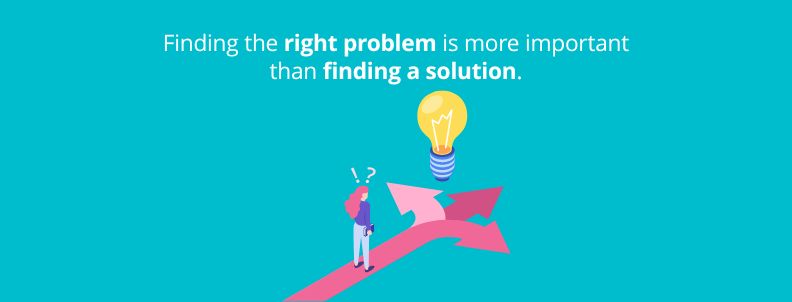Whenever my mentor discussed a problem with me, my first thought was to find the solution. Obviously, it is an attempt to show I am capable and make an impression, but then we are conditioned to run after the answer without considering the problem at hand. Well, you might be baffled by the play of words here. Nikhil’s email is the perfect guide to show you the difference between finding the right problem and finding a solution. It will make you question if looking for a solution should be the priority.
SUB: Are you solving the right problem?
“If I were given one hour to save the planet, I would spend 59 minutes defining the problem and one minute resolving it,” Albert Einstein.
Hi all – how often have you seen what seems to be a breakthrough idea, couldn’t follow through consistently because of the XYZ reasons, or are you addressing a wrong problem?
How often have you seen that you do not get the desired outcome even after applying different processes and systems to execute a particular idea?
Recently I faced a similar situation where I realized this better after my discussion with Shikhar (Senior VP. at GreyB). Here’s how the conversation went:
Me: Shikhar, I am facing trouble in getting the desired outcome from my objective.
Shikhar: What’s the problem? Tell me more about it.
Me: I’ve tried different ways to extract the intelligence out of the projects, like talking with people 1:1 to encourage them to share what they’re doing differently, building a system where people can share such information in the project tracker, and even taking workshops on it. But hardly are there case studies for 10% of the projects.
Shikhar (After giving some thoughts): How can we make this intelligence extraction effortless? Let’s think about that.
Me (thinking inside: effortless, what he’s saying. People need time to extract such info): We can create some tags on RP (Resource Planner – a tool of GreyB) whenever people come across such info while doing the project, they can tag it with intelligence.
Shikhar: Good idea, but do you think this will solve the problem.
How about we make this a part of the project process? Do you think clients like reading such info?
Me (after giving some thoughts): Yes client do like reading such info as how we cracked a case, what all we did different, various interpretation we explored, how the domain evolved, etc.
Shikhar: Then, if it becomes part of the project itself where this is shared in general discussion with a client, it will become effortless to some extent. Can we think along these lines?
Me: Let me think about how we can make this a part of the project process.
After that discussion, I jotted some thoughts. I figured out that it’s the inherent part of the project, but we are not sharing these details with the client. Some litigators gave us feedback suggesting we should include such information. I framed some questions and included them in the report. We experimented on a few projects and figured out it was not taking much time for the team to answer.
All in all, with this approach, we could do two things – add some value to the projects and extract the required intelligence from the team.
In addition, we can use the data in multiple ways like engaging other clients, sharing experiences of a different case or new strategy, and even increasing the trust of a client on the team.
Do you see how we reframed the problem from how to extract the intelligence from team members? -> how can we do this effortlessly without adding any extra steps?
In our regular day-to-day work, we face certain problems such as resource crunch, the team not performing efficiently, and we don’t get time to do other things like sharing learning, etc. So reframe those today and find out the actual problem: Is this the problem of hiring or training people quickly OR whether other things are of interest or how you can do those in 30 mins?
Best regards,
Nikhil
P.S. We discussed the info added in the projects with a few of the litigators over the call.
Surprisingly, they appreciated the thoughts, and some agreed that it is sometimes required apart from T-I/T-II. They said this put more weight on their arguments. So all ended on a good note. I will share more till we meet the next client.
The email gave an all-new perspective on how we perceive problems. Do you think this new mindset of looking at problems can help find solutions efficiently? Well, let us know in the comment section below




